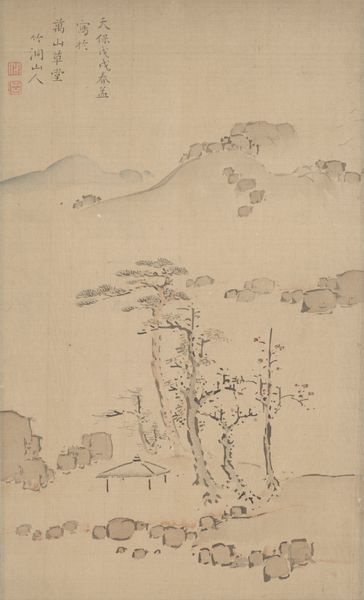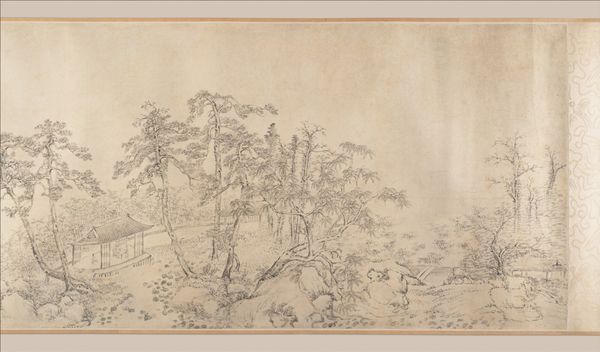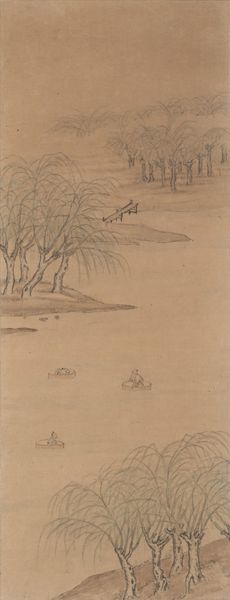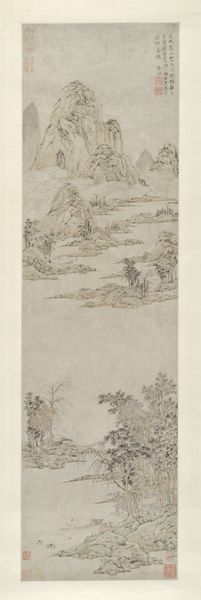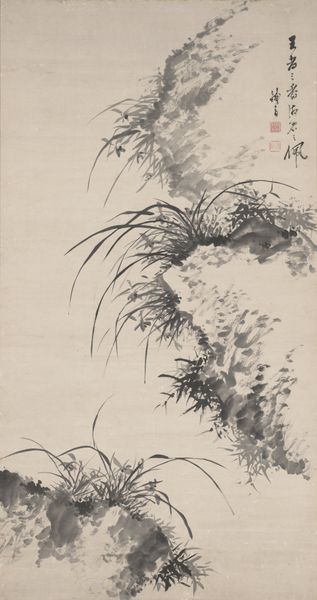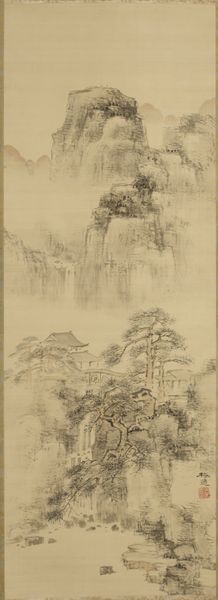
drawing, tempera, paper, hanging-scroll, ink
#
drawing
#
tempera
#
pencil sketch
#
asian-art
#
landscape
#
japan
#
paper
#
hanging-scroll
#
ink
#
orientalism
#
line
Dimensions: 21 9/16 × 11 1/8 in. (54.77 × 28.26 cm) (image)49 1/8 × 12 1/8 in. (124.78 × 30.8 cm) (mount, without roller)
Copyright: Public Domain
Niwa Kagen painted “Willow Bank” with ink on paper during the Edo period in Japan. The Edo period saw an entrenchment of social hierarchies, with artists like Niwa Kagen often navigating strict class structures. His delicate brushwork and the monochrome palette evoke a sense of quiet contemplation, perhaps reflective of the introspective turn in Japanese art at the time. The willow tree, often a symbol of resilience and adaptability, becomes a focal point. Consider how the very act of landscape painting allowed for an emotional and intellectual retreat from social constraints. The choice to depict the willow, with its drooping branches, might suggest a subtle commentary on the weight of societal expectations. Its delicate lines suggest a personal connection to nature, providing solace from the structured world. "Willow Bank" invites us to consider the relationship between personal expression and societal constraint, reflecting the artist's inner world.
Comments
No comments
Be the first to comment and join the conversation on the ultimate creative platform.
